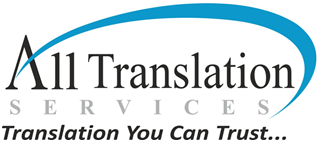Subtitling vs. Captioning: Understanding the Key Differences for Your Media Project
___Video content plays a crucial role in communication, entertainment, education, and marketing. As businesses and creators aim to reach wider audiences, professional subtitling and captioning services in Toronto have become essential tools to enhance accessibility and user engagement.
Although both subtitling and captioning appear similar at first glance, they serve distinct purposes and meet different needs for video projects. Understanding the differences between these services is vital in determining which one is best suited for your media project.
Looking for a audio and video translation company in Toronto, Abbotsford, Brampton, British Columbia, Calgary, Canada, or in Edmonton? Our Toronto translation company will be happy to help you.
What is Subtitling?
Subtitling involves translating spoken dialogue in a video into written text that appears at the bottom of the screen. Subtitles are typically used to make foreign-language content understandable to viewers who speak different languages. They convey only the spoken words in the video, assuming that the audience can hear the original audio, including background sounds, music, and other non-verbal cues.
Types of Subtitling:
Intralingual Subtitles: These are subtitles in the same language as the spoken content, often used for clarity or accessibility purposes.
Interlingual Subtitles: These involve translating the spoken language into a different language for international audiences.
Benefits of Subtitling:
Global Reach: Subtitles help you expand your video content to different language speakers and international markets.
Cost-Effective Translation: Translating text via subtitling is often more affordable than creating full voice-over tracks.
Enhanced User Experience: Viewers can follow along with the original language while reading translations, preserving the original sound design and voice performances.
What is Captioning?
Captioning, on the other hand, is a broader service designed for the deaf and hard-of-hearing community. Captions include not only the dialogue but also all relevant audio information such as background sounds, speaker identification, music cues, and other auditory elements that help viewers fully understand the video without relying on hearing the original audio.
Types of Captioning:
Closed Captions (CC): These can be turned on or off by the viewer and are typically used for TV shows, online videos, and streaming platforms.
Open Captions: These are permanently embedded in the video and cannot be turned off. They are used in cases where the display device or platform does not support closed captions.
Real-time Captions: These are generated live during broadcasts or events, such as news programs or webinars, for real-time accessibility.
Benefits of Captioning:
Improved Accessibility: Captioning ensures that your content is accessible to people with hearing impairments or those who prefer to watch without sound.
Legal Compliance: Many countries have laws mandating captioning for public broadcasts and online media, making captioning a legal necessity for certain types of content.
Better Comprehension: Captions provide clarity to viewers, including those watching in noisy environments or non-native speakers who can follow the written text more easily.
Differences Between Subtitling and Captioning
Purpose:
Subtitling is aimed at translating spoken language for audiences who do not understand the original language.
Captioning focuses on making content accessible to those with hearing impairments, including both speech and non-speech audio elements.
Content:
Subtitles typically only include spoken dialogue and exclude other audio information like music or sound effects.
Captions include all sound information relevant to the understanding of the video, such as [music], [laughter], [door creaks], etc.
Target Audience:
Subtitles are designed for viewers who can hear the audio but do not understand the language.
Captions are intended for viewers who are deaf or hard of hearing, as well as anyone watching in environments where sound may not be accessible (e.g., in a noisy public space).
Customization:
Subtitles can often be customized by the viewer to display in various languages.
Captions are typically language-specific and include extra details like speaker identification and sound effects.
Regulatory Requirement:
Captioning is often a legal requirement for broadcasting and online streaming platforms to ensure content is accessible to all.
Subtitling, while highly beneficial for global reach, is not typically mandated by law.
Choosing the Right Service for Your Media Project
When deciding between subtitling and captioning for your media project, consider your target audience and the specific goals of your content. If you are looking to reach an international audience, subtitling will be key to breaking language barriers and expanding your global reach. On the other hand, if your primary focus is accessibility and compliance, especially for people with hearing impairments, captioning will ensure that your content is inclusive and meets legal requirements.
In many cases, both services are essential. A movie, for example, might require subtitles for international audiences and captions to comply with accessibility standards. Knowing the differences between subtitling and captioning allows you to make informed decisions and select the appropriate service for your content needs.
Conclusion
Subtitling and captioning are invaluable tools that enhance the accessibility and global reach of video content. While subtitles focus on translating spoken language, captions cater to individuals who are deaf or hard of hearing by including all relevant audio cues. Selecting the right service depends on your project’s goals, target audience, and any legal requirements.
At All Translation Services Canada, we provide both subtitling and captioning services to suit a wide range of media projects, including films, documentaries, corporate videos, and online content. With expertise in over 200 languages, we can help you reach a global audience while ensuring that your content is accessible to everyone.
